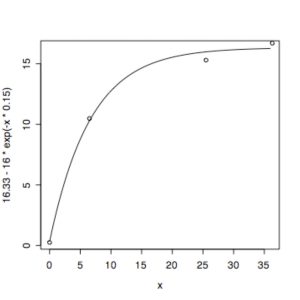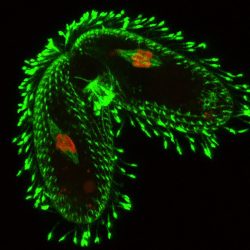Hurricane impact on the adaptive life history characteristics in the Atlantic Pearl Oyster.
 Over a six year interval we monitored oyster populations in two ponds on San Salvador Island through two severe hurricanes. One pond shelters its population from hurricanes by virtue of a dense mangrove habitat and small size (low wave propagation). The other pond lost over 99.9% of its adult oyster population during each hurricane event. These population decimations were followed by mass spawning of the few remaining individuals.
Over a six year interval we monitored oyster populations in two ponds on San Salvador Island through two severe hurricanes. One pond shelters its population from hurricanes by virtue of a dense mangrove habitat and small size (low wave propagation). The other pond lost over 99.9% of its adult oyster population during each hurricane event. These population decimations were followed by mass spawning of the few remaining individuals.
The difference in hurricane impact on these two populations provides a unique opportunity to explore how natural selection may be shaping reproductive strategies in concert with the unique physical characteristics of these anchialine ponds. We predict that in the hurricane-decimated pond, life history characteristics will have shifted, favoring early sexual maturity and gender switching in these protandrous hermaphrodites. Histology allows us to correlate reproductive status with age, while mitochondrial DNA analysis helps determine genetic diversity and divergence of these spatially isolated populations from each other and from coastal relatives.
Hurricane Oyster Demographics

A projection of oyster growth dynamics matches a Bertalanffy Growth Curve. Individuals grow quickly just after settlement, and then more slowly. X-axis indicates time measured in months, Y-axis indicates hinge length measured in mm.
